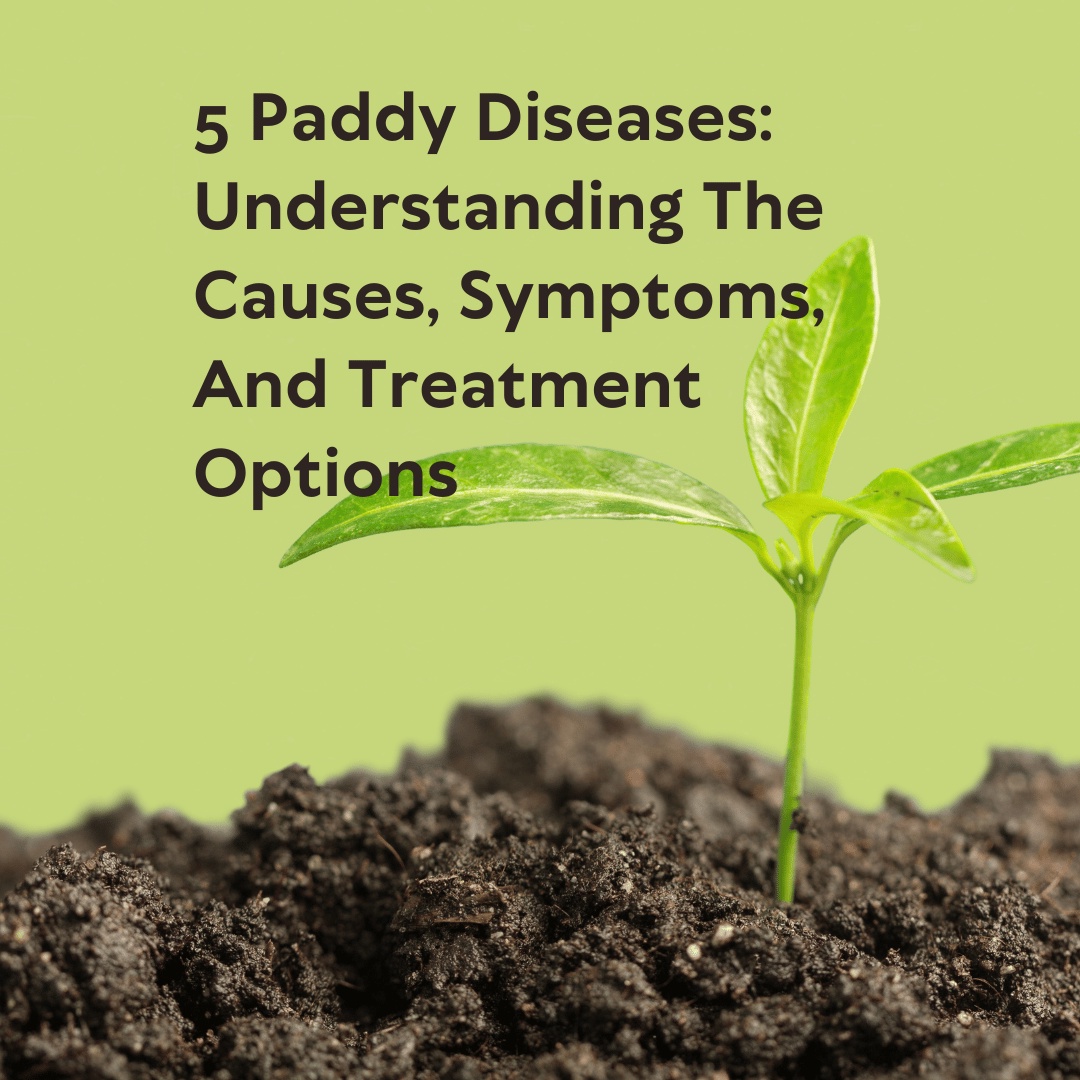1. Blast Disease:
Blast disease, caused by the fungus Magnaporthe oryzae, is one of the most devastating diseases affecting paddy crops globally. This pathogen thrives in warm, humid conditions, making it particularly prevalent in tropical and subtropical regions. Blast disease manifests as elliptical lesions on leaves, stems, and grains, often accompanied by a grayish spore mass. Severe infections can lead to complete crop loss, posing a significant threat to food production. This not only impacts the livelihood of farmers but also exacerbates food insecurity in regions heavily reliant on paddy cultivation. In the Marketplace for Farmers, such devastating losses can have ripple effects, driving up prices for consumers and creating economic instability within
1.1 Prevention and Management:
a) Plant resistant varieties: Utilize paddy varieties with genetic resistance to blast disease.
b)Crop rotation: Rotate paddy crops with non-host plants to disrupt the pathogen’s lifecycle.
c)Fungicidal sprays: Apply fungicides at recommended intervals to control fungal growth.
d)Proper drainage: Ensure adequate drainage to reduce moisture levels and minimize disease spread.
2. Sheath Blight:
Sheath blight, caused by the fungus Rhizoctonia solani, is another prevalent disease affecting paddy crops worldwide. This pathogen thrives in warm, humid conditions and is characterized by the formation of lesions on the leaf sheaths, which gradually expand to engulf the entire plant. Sheath blight reduces photosynthetic capacity, stunts plant growth, and ultimately leads to yield losses.
2.1 Prevention and Management:
a)Field sanitation: Remove crop residues and weeds to minimize disease inoculum.
b)Balanced fertilization: Avoid excessive nitrogen fertilization, which can exacerbate sheath blight.
c)Biological control agents: Utilize biocontrol agents such as Trichoderma spp. to suppress fungal growth.
d)Fungicidal sprays: Apply fungicides at the onset of symptoms to prevent disease spread.
3. Brown Spot:
Brown spot, caused by the fungus Cochliobolus miyabeanus (formerly known as Bipolaris oryzae), is a common foliar disease affecting paddy crops in humid regions. It manifests as small, dark brown lesions on leaves, which may coalesce to form larger necrotic areas. Brown spot reduces photosynthetic efficiency, leading to yield losses and reduced grain quality.
3.1 Prevention and Management:
a)Planting resistant varieties: Select paddy varieties with genetic resistance to brown spot.
b)Timely planting: Optimize planting time to avoid periods of high disease pressure.
c)Foliar fungicides: Apply fungicidal sprays at the first sign of disease to prevent further spread.
d)Proper irrigation: Avoid overhead irrigation, as excess moisture promotes disease development.
4. Rice Tungro Disease:
Rice tungro disease is caused by a complex of two viruses: Rice tungro bacilliform virus (RTBV) and Rice tungro spherical virus (RTSV). This disease is transmitted by the green leafhopper (Nephotettix virescens) and is characterized by stunted growth, yellowing of leaves, and reduced tillering. Rice tungro disease can cause significant yield losses, especially in areas with high vector populations.
4.1 Prevention and Management:
a)Vector control: Implement cultural practices such as clean cultivation and use of resistant varieties to reduce green leafhopper populations.
b)Rogueing: Remove infected plants to prevent disease spread within the field.
c)Resistant varieties: Plant paddy varieties with genetic resistance to rice tungro disease.
d)Seed treatment: Treat seeds with insecticides to prevent transmission of the viruses by infected vectors.
5. Bacterial Leaf Blight:
Bacterial leaf blight, caused by the bacterium Xanthomonas oryzae pv. oryzae, is a widespread disease affecting paddy crops in both tropical and temperate regions. It manifests as water-soaked lesions on leaves, which eventually turn necrotic and cause leaf drying. Bacterial leaf blight can result in significant yield losses, especially under favorable environmental conditions.
5.1 Prevention and Management:
a)Planting resistant varieties: Choose paddy varieties with genetic resistance to bacterial leaf blight.
b)Crop rotation: Rotate paddy crops with non-host plants to reduce pathogen inoculum.
c)Foliar sprays: Apply copper-based bactericides to control bacterial populations.
d)Sanitation: Practice field sanitation to remove infected plant debris and minimize disease spread.
Conclusion:
Paddy diseases pose significant challenges to global food security, threatening the livelihoods of millions of farmers worldwide. Understanding the causes, symptoms, and management strategies for prevalent paddy diseases is essential for effective disease control and prevention. By adopting integrated pest management practices, including the use of resistant varieties, cultural practices, and judicious pesticide application, farmers can mitigate the impact of diseases on paddy crops and ensure sustainable agricultural production for future generations.


No comments yet